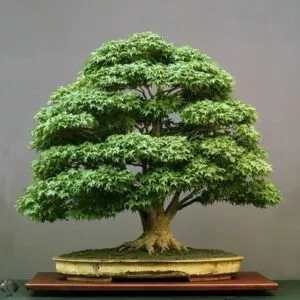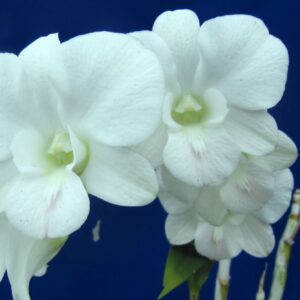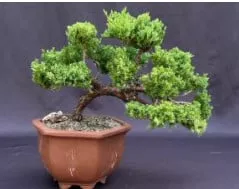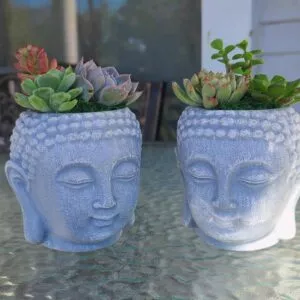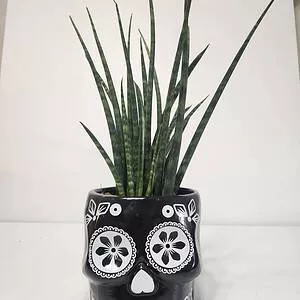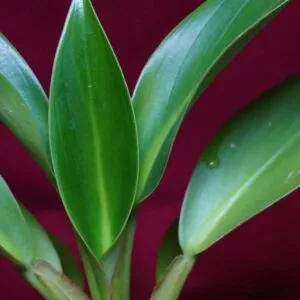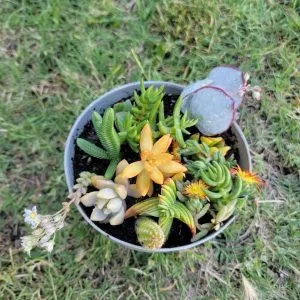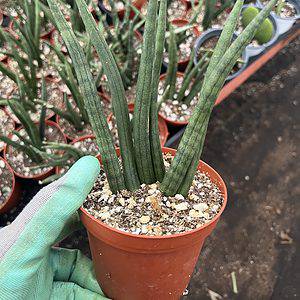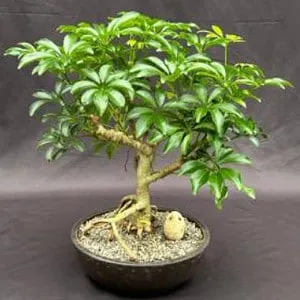No products in the cart.
Table of Contents
For a no-fuss succulent vine, the Hoya pubicalyx is one of those must-have houseplants. It produces beautiful, fragrant flowers. The plant has deep green lanceolate leaves. Sometimes, you even find the foliage decorated with greyish specks and purplish-gray stems.
You will agree that it is beautiful once the cluster of pink star-shaped blooms arrives. So, are you ready to care for your low-maintenance plant? Let’s get started learning more about the Hoya pubicalyx.
What is the Hoya pubicalyx?
The porcelain flower belongs to the Apocynaceae family. Native to the Philippines, it has green foliage with dusty pink star-shaped flowers. Yes, pronouncing the name is hard. According to the NC State Univerisity, you pronounce it as HOY-a pew-bih-KAL-iks.
You will love the sweet scent of the blooms that are more noticeable at night. The fantastic thing is that this Hoya plant protects its young with Anthocyanin. It is a natural pigment protecting the young or soft leaves from too much light.
To add beauty to any living space, hang it in a basket or place it in terrestrial pots. One thing to prepare yourself with is that it is a fast-growing plant. For a short introduction, check out the information on this tropical plant here.

Hoya Pubicalyx Care

One of the easiest houseplants to care for is the Hoya pubicalyx, like most other Hoyas. Each species has different growth rates, but the porcelain flower grows fast. It has thick, glossy leaves and makes for an exceptional ornamental plant in your home.
Soil Condition

Proper Hoya pubicalyx care starts with preparing the right soil mix. A well-draining soil that is light yet airy is best for this plant. It helps if the soil drains well because it prevents root rot.
Finally, we recommend using a high amount of organic matter filled with essential nutrients to improve the root system.
Mix one-part coarse perlite with one-part orchid bark and peat-free compost to achieve the best results. Another exceptional alternative is using cactus compost, but you’ll need to add some perlite to keep it well-drained. Maintain a soil pH of 6.5 to 7.5 (acidic to neutral).
In stock In stock Only 1 left in stock In stock
$4.95
Sold By:
Willows Bonsai
Lot of 25 Green Japanese Maple Seeds
Only 98 available and it’s in 2 people’s basket
Sold By:
Willows Bonsai
Free Shipping
$39.99
Sold By:
Aloha Hawaii Orchids
$44.99Dendrobium Full Moon ‘White’ They Come In A 3″ Pots
Rated 4.65 out of 5 based on 268 customer ratings00
Sold By:
Aloha Hawaii Orchids
Free Shipping
$370.59
Sold By:
BONSAI WORLD LLC
Juniper Bonsai Tree – Trained (juniper procumbens nana)
Sold By:
BONSAI WORLD LLC
Free Shipping
$17.50
Sold By:
D&D simplicity products
Buddha Head Planter with live succulent
Sold By:
D&D simplicity products
The Best Water Provision for Hoya
Watering Hoya pubicalyx is pretty easy as it is drought-tolerant foliage. You can provide it with regular watering in the growing season. It helps to watch the moisture level and water it when the top two inches of the soil is dry.
We recommend using filtered or rainwater instead of tap water. If you cannot do this, it helps to leave the tap water standing overnight. Doing this allows the chemicals to settle to the bottom. You can expect to water your houseplant three times a week on average during summer.
Of course, this becomes less frequent during the winter season. Also, consider the temperature and light conditions impacting the watering schedule. If you planted it in a peaty mix, water your plant less often as it retains water.
Conversely, you can water it well for a lighter potting mix until you see the water flowing from the bottom. Never leave your Hoya publicly standing in water, and discard any excess. If the plant starts to drop leaves, then you might be overwatering it.
What is a Suitable Lighting Condition for Your Plant

When grown close to a sunny window, the wax plant thrives in bright, indirect light. Another option is to grow them in natural sunlight or use artificial plant lights. Still, if you plan to plant them outside, avoid placing them in direct sunlight.
You can cover it with shade cloth to treat it as an outdoor plant to prevent the sun from scorching the flowers and leaves. Give them at least six hours of sun daily to encourage the Hoya species to bloom.
Temperature Necessity
Now that we have the soil and watering resolved, where do you place your plant? You can put your plant indoors with a temperature ranging from 60° to 75°F (15 to 25° Celsius).
Remember that your plant cannot handle frost. So, placing it in temperatures below 50°F (10°C) is not a good thing.
Humidity Condition
Your tropical plant loves high humidity levels and needs about 60% to 70% humidity in or outside the home. It helps to place your houseplant near a humidifier in a dry climate. You can mist Hoyas with a spray bottle as well.
Yet, do not mist your plant when it starts blooming. It also helps to keep your plant away from AC, vents, and heaters to prevent it from drying out the foliage.
Hoya pubicalyx Fertilizer Needs

Your indoor plant is not a big feeder, yet it appreciates some added nutrition during the growing season. We recommend using a liquid fertilizer with a high potassium level. Dilute it to half before applying it to the plant. You can also use foliar fertilizer.
Another fantastic fertilizer is using compost tea monthly or diluting some fish emulsion. Still, refrain from feeding in winter as your plant becomes semi-dormant. Instead, you can provide your houseplant twice a year.
Before feeding, ensure that the soil mixture is moist to prevent root burn.
Propagate Hoya
You can propagate the Hoya pubicalyx plant using stem cutting. The best time to do propagation is in spring and summer. We recommend taking cuttings at the beginning of spring, allowing it to root in. Here is how you can do the cuttings.
- Take your sterilized pruning shears cleaned with isopropyl alcohol.
- Next, cut up to seven inches from the stalk on the growing end with nodes.
- Remove the bottom leaves and place them on a tissue to heal in a shaded area.
- Now, you can plant your cutting with the nodes below the soil about four inches deep.
- Water the ground thrice a week, but keep it moist until you notice a new plant growth. The root can take up to four weeks to develop.
- Place your cutting in a warm and humid spot in indirect sunlight.
- After the plant roots, you can repot your cutting and place it in a sunny location with shade to prevent the leaves from burning.
Or, if you prefer, you can use a plastic bag with potting soil and sphagnum moss to grow the cutting.
-
$25.00Sold By: Stripes and Variegations
In stock
Sansevieria Fernwood Mikado in Sugar Skull Pot – Mikado Snakeplant 6″
Only 1 available and it’s in 1 people’s basketSold By: Stripes and Variegations -
$9.00Sold By: Cacti and Exotica
In stock
Haworthia retusa
Rated 4.98 out of 5 based on 59 customer ratings00Sold By: Cacti and Exotica -
-
Free Shipping$20.00Sold By: Blessed Family Farm
In stock
ASSORTED SUCCULENT ARRANGEMENT
Rated 4.82 out of 5 based on 22 customer ratings01Sold By: Blessed Family Farm
USDA Growth Zone
The Hoya plants can grow as annuals outside or in hanging baskets indoors if you live in zones 10b to 11 and above.
Potting and Pruning
The vining leaves of the Hoya pubicalyx plant grow over the sides of a pot and enjoy being root-bound. So you need not do repotting often. If not placed in hanging baskets, you can put them in a container with vertical support to climb upwards.
We recommend using a terra cotta pot with enough drainage holes for your growing plant. The good news is your houseplant needs little to no pruning. The best time to prune your plant is in spring after it completes flowering.
It helps to trim them from the lower part to enhance their appearance. If you find the plant growing large, it helps to prune some parts for propagation for new growth. During the pruning, it also helps to remove damaged stems and yellow leaves.
Also, wear your gloves as the white sap produced can cause irritability on the skin.
Hoya Pubicalyx Varieties
You can find different cultivars in the Hoya pubicalyx, each with a cluster of star-shaped flowers in other colors, as seen here:
Hoya carnosa

The Hoya carnosa has large, dark green almond-shaped leaves growing on vines with creamy flower clusters. It also thrives in medium to bright indirect light and does not enjoy the direct sun, dark corners, or artificial light.
Royal Hawaiian Purple

The Hoya pubicalyx has green leaves with silver, greyish pattern. The plant produces pink-red or sometimes black star-shaped blooms.
Hoya linearis

The Hoya linearis is a distinctive cultivar with fuzzy linear stems that create a curtain when hung in a basket—the trailing houseplant blooms with white star-shaped flowers from summer to fall.
Hoya Pubicalyx Diseases & Pests
While the trailing plant is easy-going yet rewarding greenery, you must watch it for pests. The flowers can attract the following insects, causing harm to their gorgeous foliage.
Mealybugs
The insect can infest your Hoyas fast, causing them to die. To remove these pests, you can use an insecticide in the potting soil when potting your plant. Or you can spray your Hoya pubicalyx with neem oil. Alternatively, you can use isopropyl alcohol dipped in a Q-tip to place on infected areas.
Aphids
The tiny insect you find on the back of the leaves or the flower buds. You can also find them at the base of the stem. To remove the pestilence, spray the plant with water or use insecticidal soap. Or you can make an aphid spray using liquid soap and water applied to the affected parts.
Whiteflies
These insects are present in warmer months, causing the leaves to turn yellow and dry out. To prevent these flies from infesting your Hoya pubicalyx plant, you can place yellow sticky traps to control them. Another helpful remedy is to use insecticidal soap or neem oil.
Root-rot Nematode
The worst problem you can face with your Hoya pubicalyx is a root-rot nematode. So, watching for yellowing, wilting leaves, and stunting is best. If left untreated, it will die. If your houseplant is heavily infested, it helps to take a cutting from the top section to propagate into a new plant.
Removing your plant from other houseplants is essential to prevent further infestations. Also, we recommend adding organic matter to the soil when transplanting your plant with repotting to control these pests.
Frequently Asked Questions
The blooms have a sweet fragrance more noticeable at night than during the day. The plant also produces a natural pigment called Anthocyanin. The pigment protects soft leaves and the young from intense light.
No, the H. pubicalyx is not variegated, but you can find a variegated plant of the Hoya carnosa called the Hoya pubicalyx Splash. The plant has long pointed leaves with splashes of white silver. When it blooms, you notice it has a dark mauve flower.
To increase the splash on your H. pubicalyx leaves, professional gardeners use Agromax Pure Boom. The splash found on the leaves is not variegated but stored energy in the form of starches.pla
When searching online, you can buy your tropical plant from different suppliers and local nurseries. Yet, there is no need to go browsing for hours on end to find one. The good news is you can buy the Hoya pubicalyx here at Plantly and have it delivered to your door.
Whether you want to buy, sell or simply reach out to other plant enthusiasts, Plantly is the right place to be!
-
Free Shipping$275.75Sold By: BONSAI WORLD LLC
In stock
Chinese Flowering White Serissa Bonsai Tree of a Thousand Stars
Only 1 available and it’s in 1 people’s basketSold By: BONSAI WORLD LLC -
$14.99Sold By: Cacti and Exotica
In stock
Snake Plant | Sansevieria cylindrica | 4″ Pot
Rated 4.98 out of 5 based on 59 customer ratings00Sold By: Cacti and Exotica -
Free Shipping$361.79Sold By: BONSAI WORLD LLC
In stock
Hawaiian Umbrella Bonsai Tree Exposed Roots (arboricola schefflera)
Only 1 available and it’s in 1 people’s basketSold By: BONSAI WORLD LLC -
$15.00Sold By: Stripes and Variegations
In stock
Espostoa Melanostele – Peruvian Old Lady Cactus 5″ Pot
Sold By: Stripes and Variegations
